Forefoot Pain
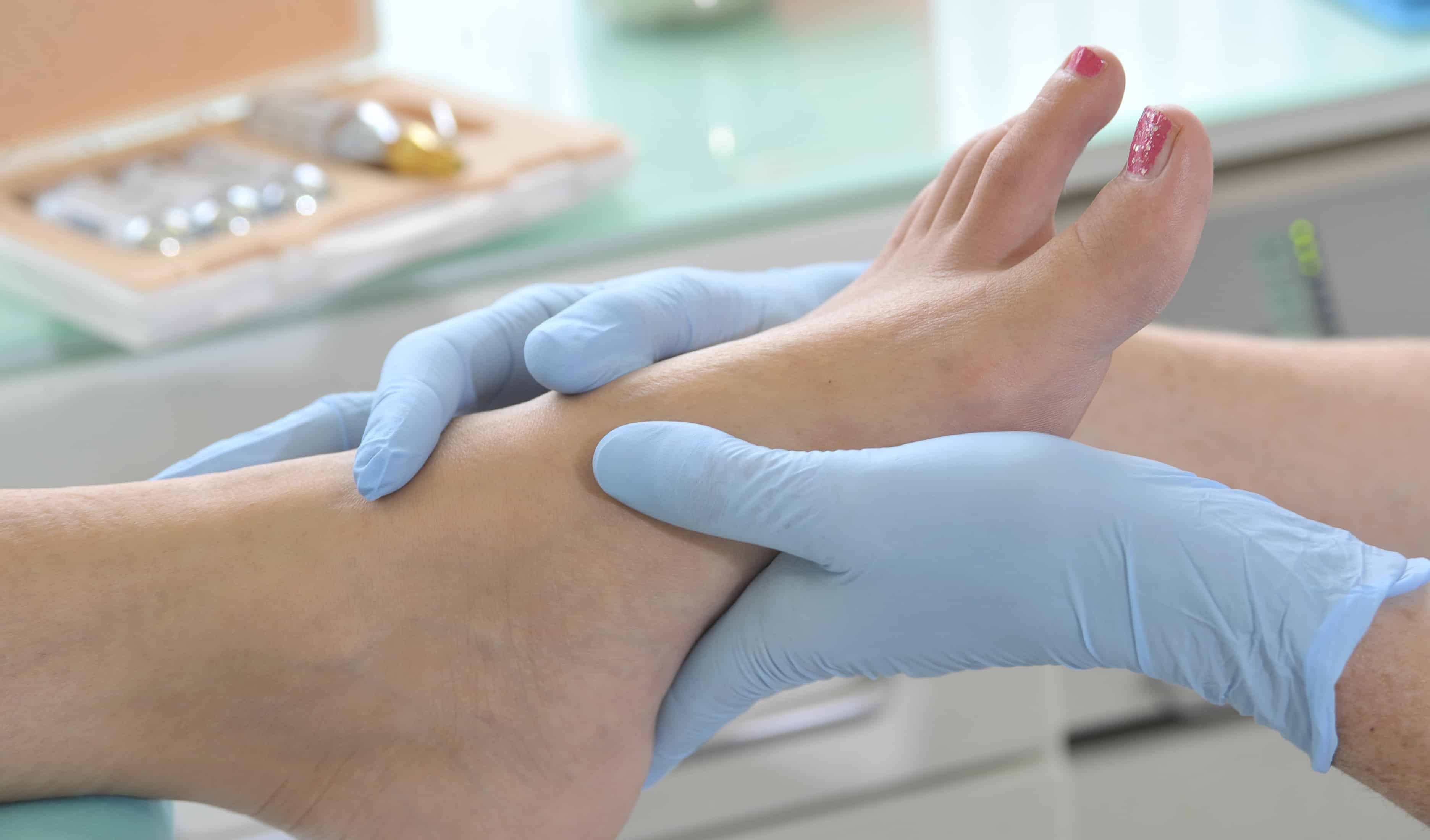
For more information on forefoot pain chiropody treatments that are available, please use the toggle switches below:
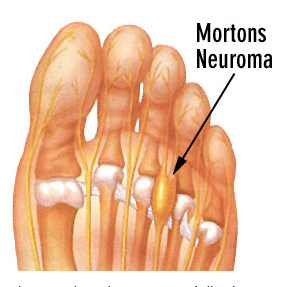
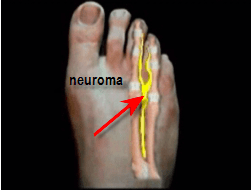
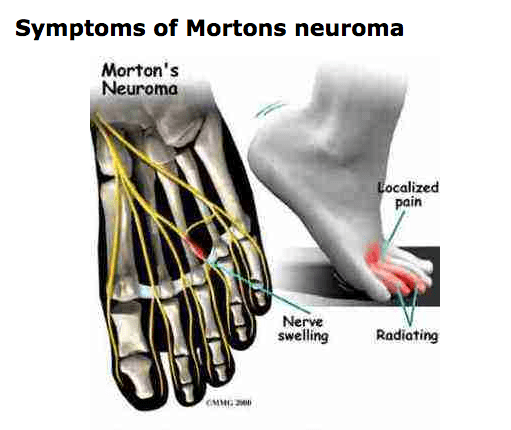
Morton’s Neuroma is an enlarged nerve causing pain in the forefoot normally between the third and fourth metatarsal heads. Forefoot problems may be caused by tight footwear, sports activities, walking. Foot deformities such as bunions, hammer toes and flat feet are amongst other reasons.
Neuroma’s are very painful and people who have them may experience tingling, burning sensation, pain in the toes and forefoot. Described as just like walking on a stone and in severe cases numbness.
Also diagnosed by palpating the painful area on the forefoot and obtaining a ‘Mulder’s click’, this reproduces the symptoms. Examination of the painful foot during stance sometimes pushes the affected toes apart and this is called ‘Churchill’s sign’.
Treatments for Morton's Neuroma
- Footwear-Identifying the shoes that sets off the pain and no longer wearing them may eradicate the problem.
- Anti-inflammatory medication for temporary relief only. There are potential systemic problems with taking this type of medication for long periods of time.
- Low Level Laser Therapy – for pain relief and tissue repair acts locally and may be used instead of taking oral anti-inflammatories. It is very gentle and effective in the treatment of Morton’s neuroma.
- Orthotics- A podiatrist may recommend a biomechanical examination. This evaluation is used to fabricate orthotic devices custom made to the structure of the patient’s foot. This controls abnormal structural components of the foot contributing to the condition and relieving pressure on the forefoot.
- Metatarsal pads can be build into the orthotic or simple insole which attempts to spread apart the adjacent metatarsal bones removing the pressure on the nerve, thus reducing pain. This type of Morton’s neuroma treatment is for patients who are not able to have other types of treatment and is the most conservative type available for this condition.
- ‘Chair side orthotics’ are a less expensive option than prescription orthotics for neuroma pain.
- Cortisone injection of the area may also help reduce the pain and swelling.
- Cryosurgery- A nonsurgical option that has become available in recent years is the use of cryosurgery under local anaesthesia. The neuroma is frozen by inserting a probe under the guidance of an ultrasonic scan which deadens the nerve thus eliminating the pain.
- Surgical removal of neuroma under local or general anaesthesia cuts the nerve out but may leave a permanent scar in its place called a ‘nubbin’which may be just as painful as the neuroma.
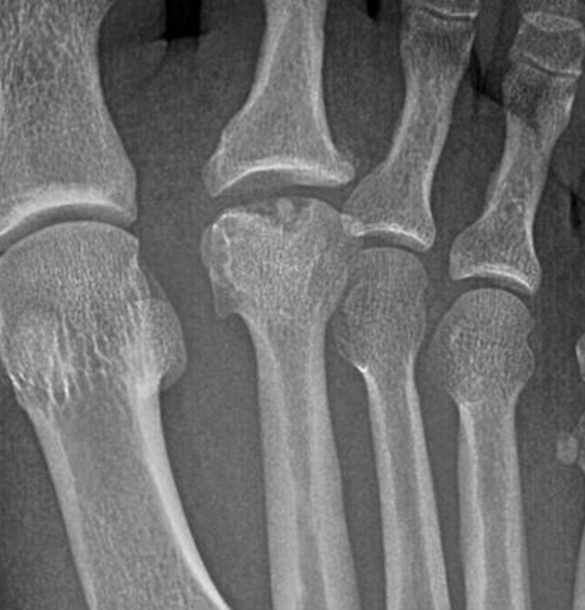
Freiberg’s Infraction occurs when the head of the second (and sometimes the third and fourth) metatarsal bones have a loss of blood supply. Most commonly amongst children 10 – 17 years of age.
Caused by stress or injury to the foot along with sporting activities and rapid skeletal growth.
Diagnosis is normally from clinical examination or biomechanical assessment in addition to discussing the best course of action to relieve the pressure on the metatarsal head. Low level laser therapy has been effective in healing the damaged tissues and orthotics may be recommended.

Metatarsalgia is the general term for pain and inflammation in the ball of the foot. High pressure and friction damage the bones, ligaments, nerves, bursa, and joint capsules. Metatarsalgia tends to develop gradually over time and the pain is usually worse when standing, walking or running.
Causes :-
- Narrow restrictive footwear e.g high heels, squeeze the metatarsal heads together damaging soft tissues contribute to nerve entrapment.
- High impact sports like running or dancing increase the pressure on the forefoot causing stress fractures, neuromas, bursitis, particularly if incorrect footwear for the type of activity have not been worn.
- High arches or flat feet.
- Weight gain
- Bursitis/ Morton’s neuroma
- Overuse during sports lead to stress fractures
- Bunions/ hammer toes/ retracted toes
- Diabetic neuropathy
- Previous surgery on forefoot for e.g bunion op
- Rheumatoid arthritis/osteo arthritis.
- Injuries
- Loss of metatarsal fat pad in elderly
Symptoms :-
- May affect one or both feet at the same time
- Localised in a small area or across the whole fore foot
- Dull aching pain
- Burning or sharp pain
- Tingling, parasthesia or numbness.
- Feeling like your walking on something hard.
- Feels bruised and sore.
Prevention & Treatment :-
- Rest from activity that aggravates the pain
- Ice pack 10 mins a few times a day (wrap towel around ice pack to prevent it damaging the skin)
- Ensure you wear correctly fitting shoes, with low heels, deep & wide in toe area with thick soles
- Wear the correct footwear for each activity
- Maintain a healthy weight
- Good diabetic control
- Oral painkillers
- Low level laser therapy has been successfully used for pain relief and tissue repair.
Diagnosis is usually from patient history and clinical examination, the Podiatrist will discuss the best course of action to relieve the symptoms.
Low level laser therapy has been effective in healing the damaged tissues and orthotics may be recommended if there is an underlying biomechanical problem. If the pain does not improve despite self treatment and interferes with normal activities, or you develop a severe pain or change in foot shape it could be a sign of a more serious problem that requires medical treatment.
A Podiatrist may recommend additional treatments, such as custom-made insoles (orthotics), foot and ankle exercises, steriod injections or, in rare cases, surgery.